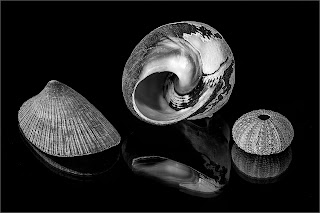Ok - Final blog post for 2016! And the final TPS meeting for 2016. It wasn't the greatest way to end the year - three Silver awards and one Bronze award, but at least it's good motivation to do better next year! Again - please click on the images for the large versions.
Set subject for November was "Action". A really difficult subject to find something different to shoot. Both my shots were taken at the Zone 7 Speed Spot just off the N7. I quite like both images, but both received Silver ratings, mainly because the judge found the backgrounds distracting.
This was my entry in the print section.
And then this one in the digital section:
 For the open digital section, I chose two monochrome images. The first one was of a selection of sea shells. To get the reflections, I set them up on my iPad. I like the image, but can see why it didn't get Gold.
For the open digital section, I chose two monochrome images. The first one was of a selection of sea shells. To get the reflections, I set them up on my iPad. I like the image, but can see why it didn't get Gold.The final image was also taken at Theewaterskloof Dam. I titled it "Desperate for that rain", wanting to highlight the clouds and the fact that we get so many promises of rain without the rain materialising, as can be seen from the dam levels. Anyway, the judge wanted to see more detail in the sand in front (?) and didn't like the image at all, hence the Bronze rating. But you know what? - I like it anyway!
So all that's left now is to wish all you lovely people who have taken time out to read my ramblings this past year. I wish you all the most magnificent 2017 - may it be the best year ever! Take care.





















